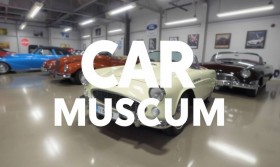Imagine slipping on a headset and, in an instant, the world dissolves. You are no longer in your living room but standing in the grand, sun-drenched rotunda of a magnificent museum. Marble floors stretch out before you, and towering, arched windows reveal a sky of impossible blue. Before you stands a single, iconic figure on a rotating pedestal: the original 1959 Barbie in her black-and-white swimsuit. As you step closer, a soft, informative voice begins to narrate, welcoming you to the Barbie Museum VR and its latest expansion: the Fashion History DLC. This isn't just a game; it's a portal, a time machine, and an interactive archive dedicated to the art of fashion, all through the lens of one of the world's most famous dolls.
The core Barbie Museum VR experience is a wonder in itself, allowing you to explore vast halls filled with dolls from every era. But the Fashion History DLC is something different. It’s a curated, deeply researched journey. Upon loading the expansion, you’re presented with a beautiful, illuminated timeline in the center of the rotunda. It’s not just a line; it’s a ribbon of evolving fabric patterns and silhouettes. You can reach out and touch a decade—say, the 1960s—and watch as the entire museum shifts and reforms around you, the architecture and ambient music transforming to match the period you’ve selected. This intuitive navigation is key to the experience, making you feel like a true curator of your own exploration.
Let’s begin with the Swinging Sixties hall. The walls are a mod, geometric pattern in vibrant orange and white. The music is a cool, jazzy beat. Here, you encounter "Barbie in Mid-Century Mod." You can pick up the doll, examining the clean A-line dresses, the bold, contrasting colors, and the oversized accessories. But the magic happens when you tap an icon beside her display. Your own avatar is suddenly wearing the outfit. You can walk around, look in a virtual mirror, and see how the sharp, architectural lines of the dress move with you. A pop-up information panel explains how this style reflected a post-war optimism and a break from the restrictive fashions of the 1950s, with designers like Mary Quant bringing high fashion to youth culture, a revolution Barbie was at the forefront of.

Moving into the 1970s, the atmosphere changes completely. The hall is decorated with shag carpeting and psychedelic posters. This is the era of "Groovy Fashion and Disco Glam." You can interact with a Barbie wearing flared jeans, a crochet top, and a fabulous maxi dress with a bold floral print. The interactive element here is a virtual fabric swatch book. You can change the patterns on her dress in real-time, swapping out the florals for paisley or polka dots, understanding firsthand the textures and prints that defined the decade. Another display showcases her dazzling disco outfit, complete with a metallic jumpsuit and platform shoes. An audio clip might play a snippet of disco music, while the info panel discusses how this mirrored the rise of studio 54 and a new era of nightlife and individual expression.
The 1980s hall is an explosion of neon and excess. Power suits with exaggerated shoulder pads, punk-inspired looks with leather and lace, and athletic wear straight out of a Jane Fonda workout video await. This section, titled "Power Dressing and New Romantics," is particularly interactive. You can mix and match different clothing items on a virtual Barbie mannequin, creating the ultimate '80s power outfit. The experience explains the concept of "power dressing," how women in the workforce used fashion as a tool of authority, and how Barbie’s careers during this time—from CEO to rock star—were directly reflected in her wardrobe. It’s a fascinating look at the sociology of fashion, made accessible and fun.
One of the most praised features of this VR fashion archive is the "Designer Spotlight" room. This is a serene, white-walled gallery that feels like a high-end boutique. Here, the DLC delves into Barbie’s collaborations with real-world fashion icons. You can examine a stunning Bob Mackie gown up close, seeing every single hand-painted detail and tiny "sequin." You can rotate a Barbie wearing an exact replica of a Christian Dior "New Look" suit, understanding the construction of the Bar jacket. The information provided is rich, detailing the designer's influence and how their partnership with Barbie helped democratize high fashion, making it aspirational for children and collectors alike. It’s a masterclass in fashion history, all contained within a few virtual rooms.

Beyond just looking at the clothes, the DLC includes a "Fabric and Form" workshop. This is a hands-on zone where you can deconstruct a garment. By selecting a specific outfit, like a 1950s prom dress, you can peel back the layers. You can see the crinoline underskirt, understand how the bodice is tailored, and even view a wireframe model showing the pattern pieces used to create the dress. This demystifies the process of garment creation and gives you a profound appreciation for the miniature craftsmanship involved in doll fashion design. It answers the "how" behind the "what," satisfying a deep curiosity about the art form.
For many users, a key question is about the social and cultural context. The DLC addresses this beautifully not through dry text, but through immersive dioramas. In the 1960s section, for instance, Barbie isn't just in a box; she’s positioned in a miniature living room set with a vintage television playing a period-appropriate commercial. In the 1990s section, she might be in a grunge-inspired coffee shop. These contextual settings show how fashion was lived in, how it functioned in daily life and in fantasy. It connects the clothes to the world they existed in, making the history lesson feel organic and lived.
As you progress through the timeline into the 2000s and beyond, the DLC showcases how Barbie’s fashion became more global and inclusive. You see influences from streetwear, K-pop, and sustainable fashion. The experience highlights how the brand began to reflect a wider, more diverse world, with dolls of different body types, skin tones, and abilities, all wearing fashion that speaks to their individual stories. This section feels particularly current and relevant, showing that fashion history is not just about the past, but is a continuously evolving narrative.
The beauty of this virtual reality fashion experience is its accessibility. You don't need to be a hardcore gamer to enjoy it. The controls are intuitive—using simple gestures to grab, rotate, and wear items. The pacing is self-directed; you can spend hours delving into every information panel or simply enjoy a breezy walk through the decades, admiring the visual evolution. It’s an educational tool disguised as entertainment, a perfect resource for fashion students, nostalgic adults, and curious children alike. The ability to actually "wear" the clothes in VR provides a unique form of embodied learning that a book or documentary could never offer.
Stepping back into the central rotunda, the journey feels complete. You've traveled through over six decades of style, not as a passive observer, but as an active participant. You’ve felt the shift from the structured elegance of the 50s to the free-spirited 70s, from the power-driven 80s to the eclectic 2000s. The Barbie Museum VR Fashion History DLC does more than just display digital dolls; it builds a bridge between play and education, between nostalgia and historical understanding. It preserves the intricate art of fashion design in a dynamic, engaging medium, ensuring that these miniature masterpieces and the stories they tell are not forgotten, but can be discovered and rediscovered by generations to come, all from the comfort of their own homes. It turns the simple act of playing with a doll into a profound exploration of our cultural tapestry.

















